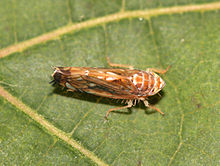- WHAT IS BIOLOGICAL AGRICULTURE?
- CORROBORANT - AMENDANT
- WHAT ARE ZEOLITITE CHABASITE?
- WHY USE ZEOLITE?
- ZEOLITE CHABASITE EXTRACTION
- APPLICATIONS - ZEOLITE
- BENEFITS OF ZEOLITE CHABASITE - VINEYARDS - ORCHARDS
- ZEOLITE CHABASITE GRASS CARPETS
- ZEOLITE CHABASITE WATER PURIFICATION
- PRODUCTS
- GRAFTED CUTTING
- SERVICE-VINEYARD PLANTING
- DISEASES IN THE VINEYARD
- VITIS VINIFERA
- CONTACT
Below we want to list some of the diseases on lives where we have used our Zeolite Chabasite: Removed the last of the Flavescence Dorata, (there are several trials in the area) we have had great results or healthy grapes without disease without disease. By simplifying, Zeolite Chabasite does not allow the excesses of water which are the carriers of diseases, it reduces humidity being a natural regulator thanks to its great cation exchange and its reversibility we constantly maintain the right temperatures and water on the plants. However, it is always advised to talk to our Agronomist who will give you the dosages and the right times for the treatments.
PERONOSPORA

Generally refers to a plant disease caused by protists belonging not only to the genus Peronospora, but also to other genera, both from the Peronosporacea family and from the Piziacee family. The disease generally falls into the category of trophic diseases as it is caused by parasitic organisms that remove trophic resources from the host plant by means of fairly close anatomical and physiological relationships. The etiology manifests itself, in general, with depigmentation on the green tissues, which are generally followed by more or less extensive necrosis. Degenerative processes occur on the fruits that occur with necrosis or rottenness. The outcome of peronospora attacks is often lethal, especially when it affects herbaceous plants.
OIDIO

Oidium, also called mal white, fog or albugine [1], is a trophic disease of plants caused by Ascomycota fungi of the Erysiphaceae family in the asexual phase of the cycle, in the past identified with the genus of imperfect fungi Oidium. A common characteristic of the Oidium is that of producing conidiophoric hyphae ending in conidiospore chains, called oidiospore.
The trophic relationship that binds the oidium agents to host plants is an obligatory parasitism. Most species behave like ectoparasite, developing a mycelium on the surface of the attached organs. The anatomo-physiological relationship that links the pathogen to the host is constituted by austorii that cross the epidermis penetrating into the cells of the underlying tissue. Only a few species, belonging to the genera Leveillula and Phyllactinia, penetrate through the stomas behaving in this case as ecto-endoparasites or as endoparasites.
BOTRITE

Botrytis cinerea is a fungus of the family Sclerotiniaceae, a parasite that attacks many varieties of plants, even
if among the different guests the most economically important is the vine (in particular, it attacks grapes).
In viticulture it is commonly known as gray rot or gray mold. The same can also cause allergies.
The Latin name cinerea (made of ash) refers to the ash gray color taken from grapes due to the sporata of this species.
MAL DELL'ESCA

This disease, which has always been associated with rather old vines, is widespread in all wine-growing areas of the world and currently causes serious damage even in young plants, especially on varieties considered sensitive such as Sauvignon Blanc and Cabernet Sauvignon. The severity of this disease is mainly due to the fact that there is currently no product able to counteract it, since sodium arsenite was withdrawn from trade due to its toxicity to man and the environment.
SCAPHOIDEUS TITANUS

This insect causes minor direct damage due to the toxic action of saliva, exercised during the suction of the sap. On the attached plants one can observe, mainly on the ribs and on the shoots, necrosis and chromatic alterations. The most serious damage, however, is of an indirect type and is represented by the transmission of the golden Flavescence phytoplasma that is localized in the phloem following suction stings.
WIKIPEDIA
VIGNA TECH SRLS
REGIONE DOTA N.28 - 14053 CANELLI (AT)
CONTATTI:
+39.328.146.9772
+39.375.616.8405
accessoripervigneti@vignatech.it
C.F. E P.IVA 01623950050

